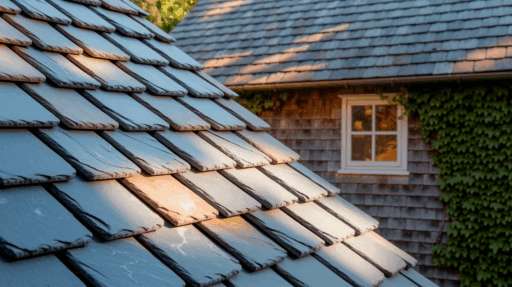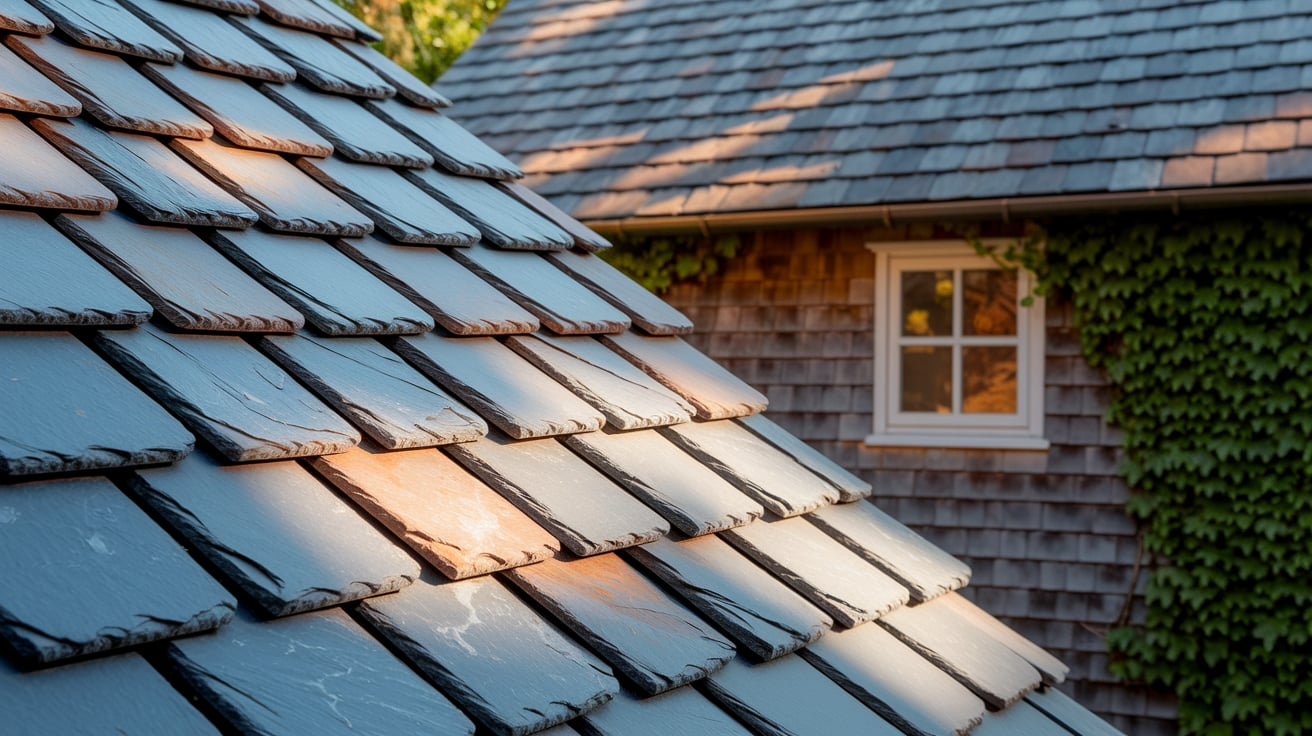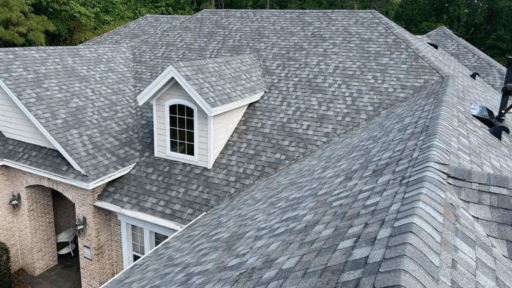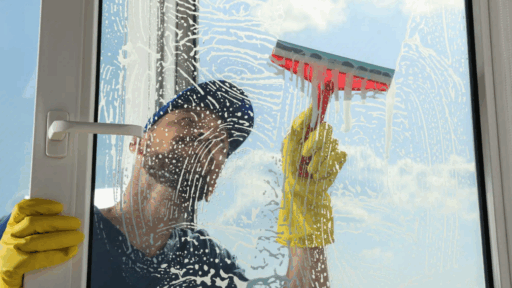Slate is a premium roofing material known for its timeless beauty and impressive strength.
It’s been used on homes and buildings for centuries, and I’ve always admired how well it holds up, especially on older properties that still look great today.
Unlike many other roofing options, a slate roof can last a lifetime, or even longer, if it’s installed and cared for the right way.
That long lifespan makes it a smart pick for homeowners like me who want something strong, low-maintenance, and built to last.
In this blog, I’ll go over how long a slate roof can really last, what affects its lifespan, how it stacks up against other roofing materials, and the simple ways to keep it in great shape.
If you’re considering a slate roof or want to better understand the one you have, keep reading. I’ll walk you through everything you need to know.
What Is a Slate Roof?
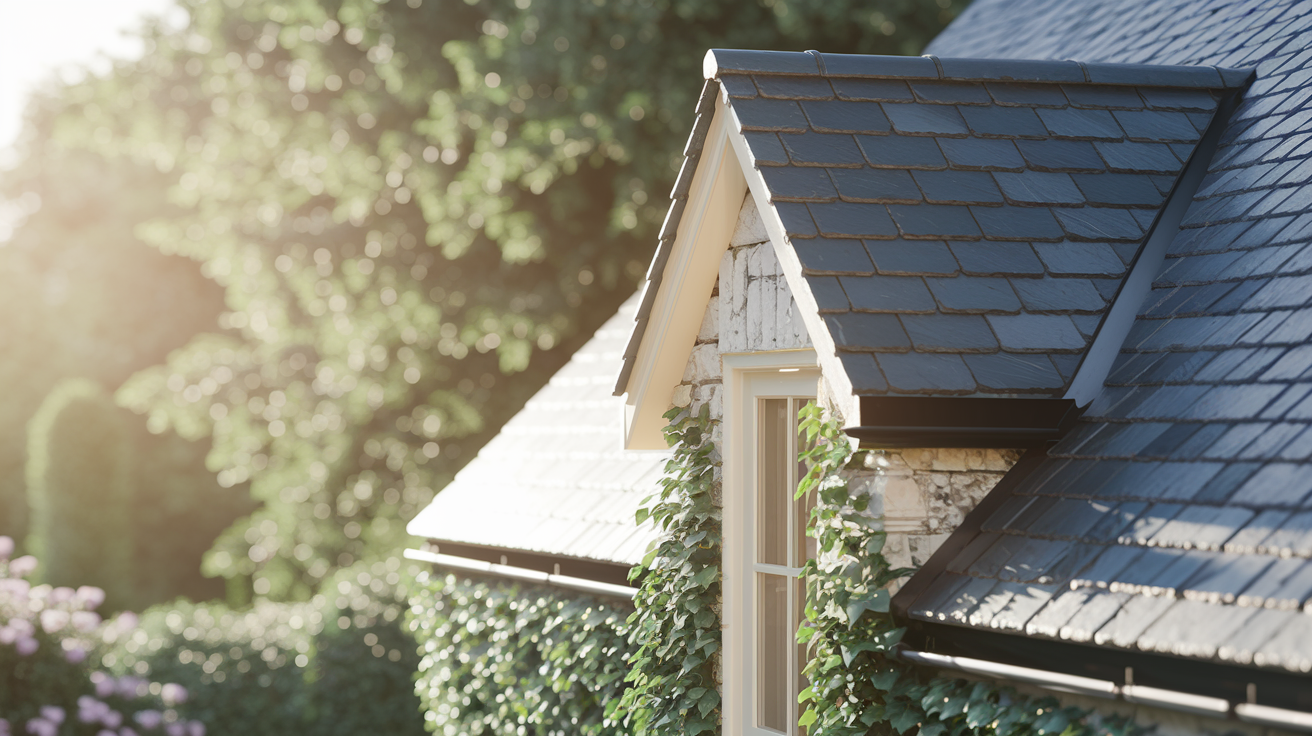
A slate roof is a type of roofing system made from natural stone tiles.
These tiles are cut from slabs of metamorphic rock, typically formed under high heat and pressure deep within the Earth.
Once shaped, they’re laid out in overlapping rows, creating a strong and water-resistant surface.
Slate has been used for roofing for hundreds of years, particularly in areas where the stone is readily available.
Its natural appearance, strength, and resistance to fire, mold, and weather damage make it a trusted choice for long-lasting roofs.
Types of Slate Roofs
When it comes to slate roofing, there are two main options to consider: natural slate and synthetic slate. Each has its own pros and cons depending on your needs, budget, and home structure.
Natural Slate
Natural slate is a real stone material, often quarried in Vermont, Pennsylvania, Wales, or Spain. Each tile has its own natural look, with unique grain, tone, and texture.
- Durability and Lifespan: Natural slate is incredibly tough, with a lifespan of 100 to 200 years or more when properly maintained.
- Cost and Structure Needs: It’s more expensive upfront and heavier, requiring a strong roof structure to support it. But over time, the low maintenance and long life make it a smart investment.
Synthetic Slate
Synthetic slate, also known as composite or faux slate, is made from recycled materials such as rubber, plastic, or engineered polymers. It’s built to mimic the look of natural slate.
- Lightweight and Affordable: This option is much lighter and easier to install, which helps reduce labor and support costs.
- Shorter Lifespan: While synthetic slate is more budget-friendly, it usually lasts only 30 to 50 years and doesn’t offer the same strength or long-term value.
Which Slate Roof Is Right for You?
Choosing between natural and synthetic slate depends on your home’s structure, your budget, and how long you plan to live there.
Both look beautiful and hold up well, but for those seeking a roof with legacy and longevity, natural slate stands out as the superior option.
Average Lifespan of Slate Roofs
A well-installed natural slate roof can last between 75 and 200 years, making it one of the most durable roofing materials available.
Many older homes still have slate roofs that are over a century old and in great shape.
The lifespan depends heavily on the quality of the slate and the quality of its installation.
High-grade slate is dense and weather-resistant, whereas lower-grade options may deteriorate much sooner.
Proper installation is critical; mistakes, such as poor nail placement or faulty flashing, can lead to early failure.
Regular maintenance also plays a role. While slate is generally low-maintenance, occasional inspections help catch issues like cracked tiles or loose flashing before they become serious problems or lead to expensive repairs.
Factors That Affect Slate Roof Longevity
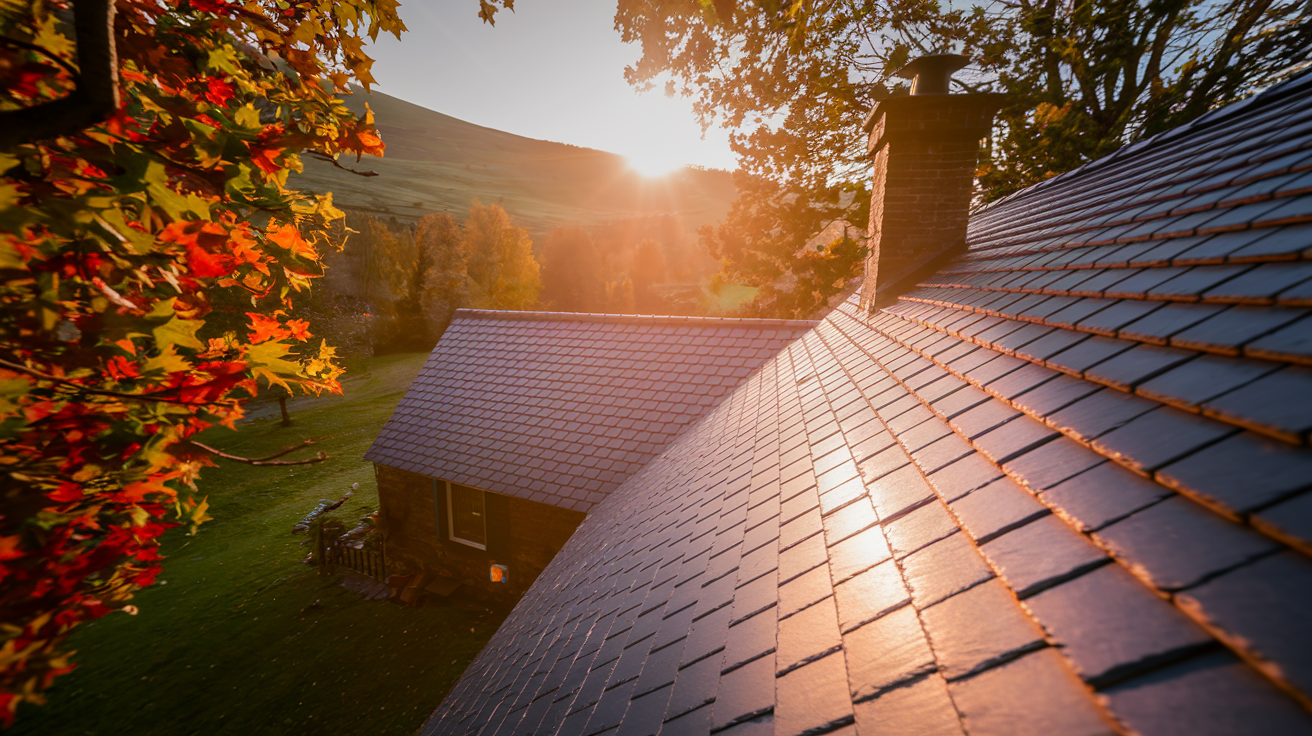
While slate roofs are renowned for their longevity, their actual lifespan can vary depending on several key factors.
It’s not just about having slate tiles, it’s about having the right slate, installed the right way, in the right conditions.
1. Quality of the Slate Material
Not all slate is created equal.
High-grade slate is dense, strong, and has low water absorption, which helps it resist cracking and weather damage.
This kind of slate often comes from well-known quarries with a long history of producing roofing stone. It can last well over 100 years.
Low-grade slate, on the other hand, may look fine at first but is often softer and more prone to crumbling, flaking, or fading.
It may only last 30 to 50 years, sometimes even less, before problems begin to appear.
Choosing top-quality slate from a trusted supplier is one of the best ways to ensure your roof lasts as long as possible.
2. Installation Workmanship
Even the best slate in the world won’t last long if it’s installed incorrectly.
Slate roofing requires specialized skills and techniques that not all roofers have.
For example, nails must be placed just right, and tiles need to overlap correctly to keep out water and withstand high winds.
If tiles are nailed too tightly, they can crack over time. If they’re too loose, they may slip out of place.
Flashing, the thin pieces of metal used around chimneys, valleys, and edges, also needs to be carefully installed to prevent leaks.
Poor workmanship can lead to early failure and expensive repairs, so it’s worth investing in a roofer who has real experience with slate.
3. Climate and Weather Exposure
Where you live plays a significant role in how your slate roof performs.
In areas with harsh freeze-thaw cycles, water can seep into small cracks in the slate, freeze, and expand, causing the stone to break apart over time.
Heavy storms, hail, and strong winds can also loosen tiles or cause damage to flashing.
Hot, sunny climates may not cause slate to crack, but long-term UV exposure can wear down the underlayment and flashing faster than in cooler areas.
The more extreme your local weather is, the more important regular inspections and maintenance become.
A roof that performs well in a mild climate may require additional attention in a region with harsher conditions.
4. Cost Considerations Over Time
There’s no denying that a slate roof comes with a high upfront price.
Natural slate can cost several times more than asphalt shingles or other common roofing options.
But when you spread that cost out over 100 years or more, the numbers start to make more sense.
Because slate lasts so long and requires fewer repairs, it often proves to be more cost-effective in the long run.
You’re not replacing it every 20 or 30 years like you would with cheaper materials.
For heritage homes, custom builds, or high-value properties, a slate roof adds lasting curb appeal and may even boost the property’s resale value.
It’s an investment, but one that pays off in durability, low maintenance, and classic style.
Is a Slate Roof Right for You?
Slate isn’t for everyone, but it’s a perfect fit in the right situation. If your home is older and already has a slate roof, it often makes sense to restore or replace it with the same material.
If you’re building a new home and want something with lasting beauty and strength, slate is a worthy consideration.
Consider your budget, long-term plans, and your home’s structure. Slate is heavy and needs solid support, so not every house can handle it without extra reinforcement.
However, if this is your “forever home” or a historic property you wish to preserve, a slate roof can be a smart and beautiful choice that lasts for generations.
Maintenance Tips to Extend Slate Roof Lifespan
Slate roofs are incredibly durable, but they still require some care to maintain optimal performance.
- Schedule yearly professional inspections: Hire a roofer with experience in slate to check for cracked tiles, loose flashings, or other early signs of wear.
- Clean your gutters regularly: Clogged gutters can cause water to overflow and seep under the slate, damaging the roof structure underneath.
- Remove debris after storms: Clear away fallen leaves, branches, and other debris from the roof surface to prevent moisture buildup and damage to the tiles.
- Replace damaged tiles right away: Don’t ignore even a single cracked or missing tile—it can lead to leaks and weaken the surrounding areas.
- Keep nearby trees trimmed: Overhanging branches can scrape or crack the tiles during windy weather and drop debris directly onto the roof.
Conclusion
Slate roofs are renowned for their exceptional longevity, often lasting 75 to 200 years.
That kind of durability makes slate a trusted choice for homeowners who want strength, low maintenance, and timeless style.
It’s more than just a roof; it’s a lasting investment in your home’s look and protection.
Still, even slate needs proper care. The roof’s quality, expert installation, and regular maintenance all impact its lifespan. Small repairs and routine checkups can make a big difference.
If you’re planning a new build, replacement, or restoration, be sure to hire a roofer with slate experience.
The right expert can help you avoid costly mistakes and keep your roof in great shape.
Thinking about slate? Reach out to a skilled roofer and plan for a roof that lasts for generations.

